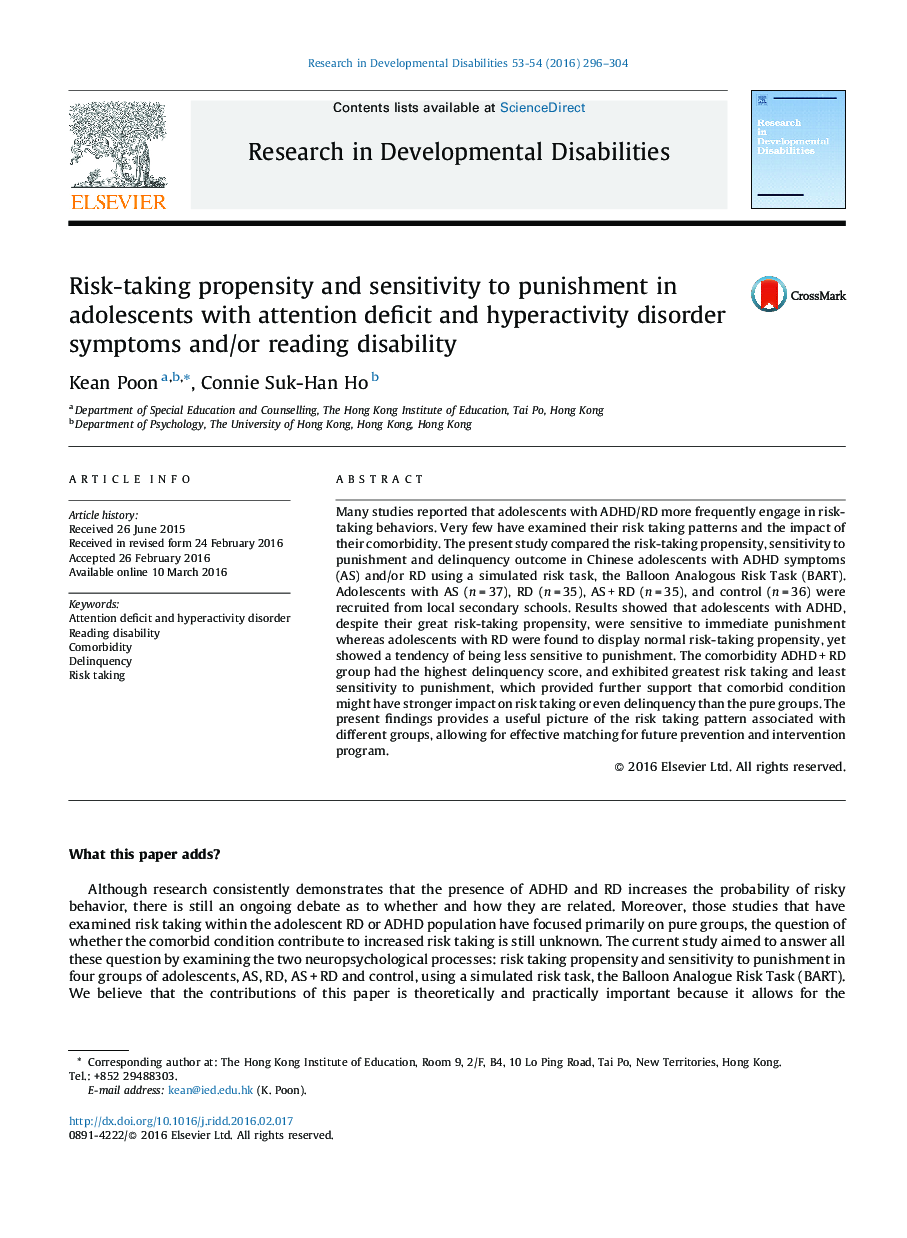| Article ID | Journal | Published Year | Pages | File Type |
|---|---|---|---|---|
| 370989 | Research in Developmental Disabilities | 2016 | 9 Pages |
•We confirm the potential utility of BART as a behavioral measure for assessing delinquent behavior.•ADHD despite with greater risk-taking propensity, was sensitive to immediate punishment.•RD despite with normal risk-taking propensity, displayed a tendency of being less sensitive to punishment.•Comorbid had the highest delinquency score, risk propensity and the least punishment sensitivity.•Comorbidity might have stronger impact on risk taking or even delinquency than pure condition.
Many studies reported that adolescents with ADHD/RD more frequently engage in risk-taking behaviors. Very few have examined their risk taking patterns and the impact of their comorbidity. The present study compared the risk-taking propensity, sensitivity to punishment and delinquency outcome in Chinese adolescents with ADHD symptoms (AS) and/or RD using a simulated risk task, the Balloon Analogous Risk Task (BART). Adolescents with AS (n = 37), RD (n = 35), AS + RD (n = 35), and control (n = 36) were recruited from local secondary schools. Results showed that adolescents with ADHD, despite their great risk-taking propensity, were sensitive to immediate punishment whereas adolescents with RD were found to display normal risk-taking propensity, yet showed a tendency of being less sensitive to punishment. The comorbidity ADHD + RD group had the highest delinquency score, and exhibited greatest risk taking and least sensitivity to punishment, which provided further support that comorbid condition might have stronger impact on risk taking or even delinquency than the pure groups. The present findings provides a useful picture of the risk taking pattern associated with different groups, allowing for effective matching for future prevention and intervention program.
